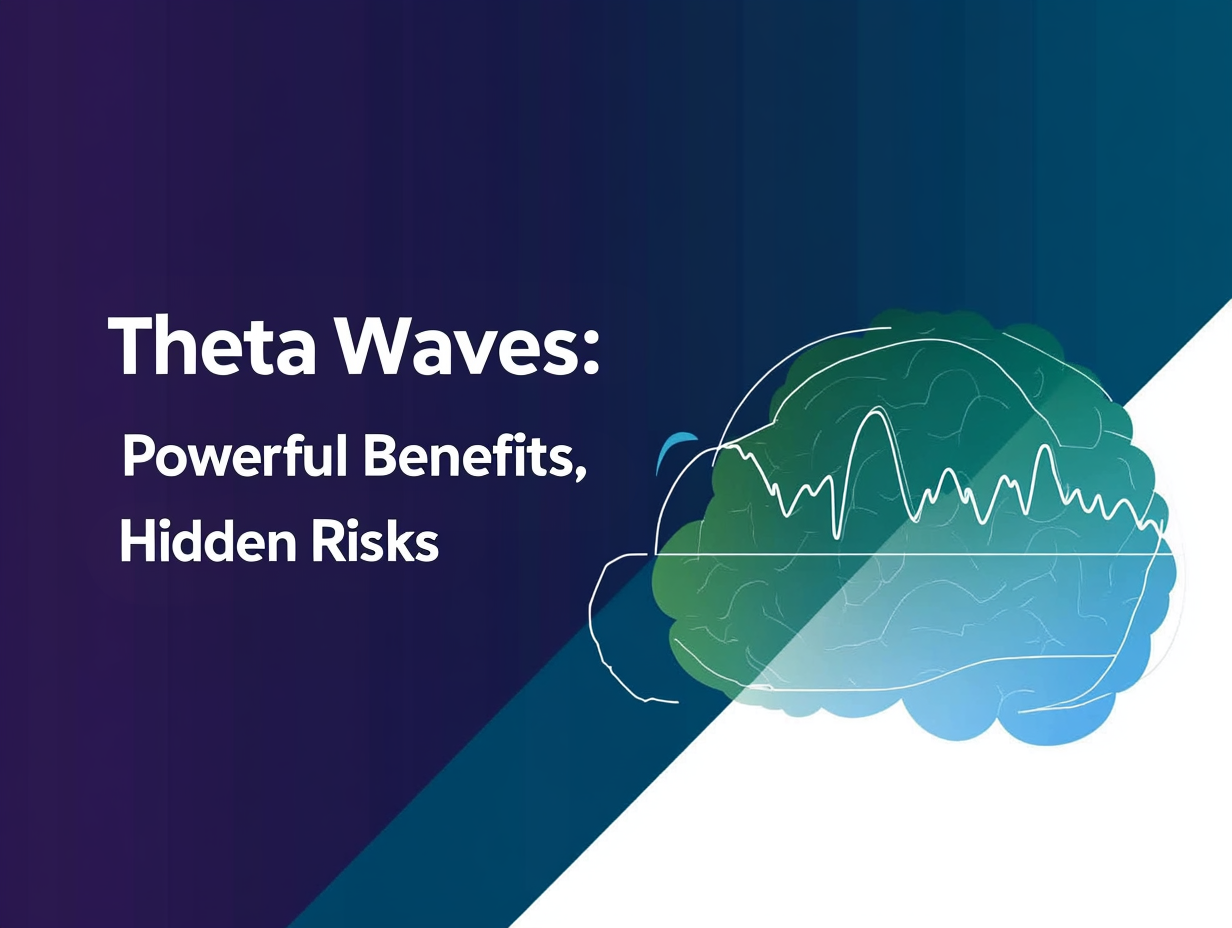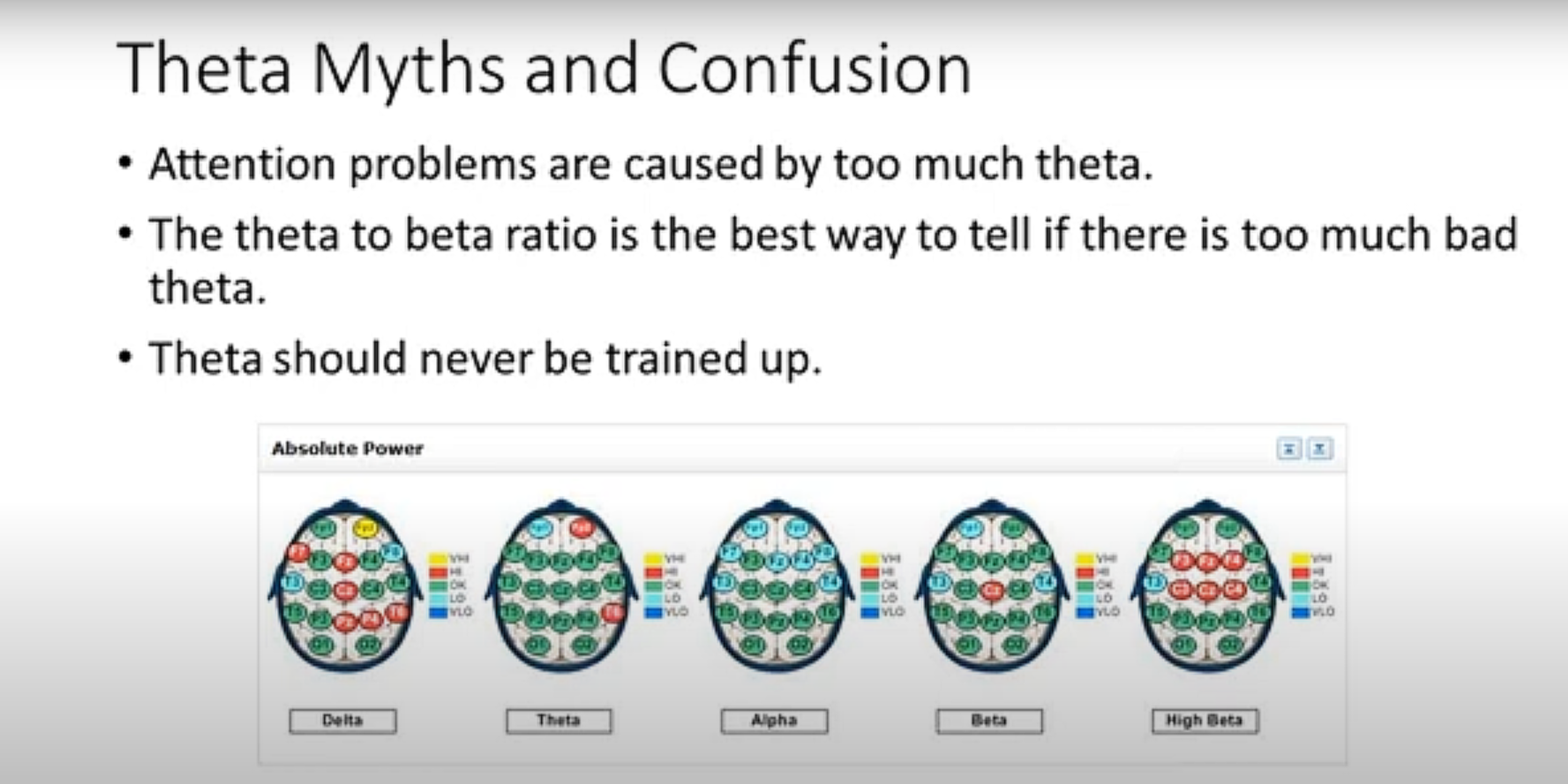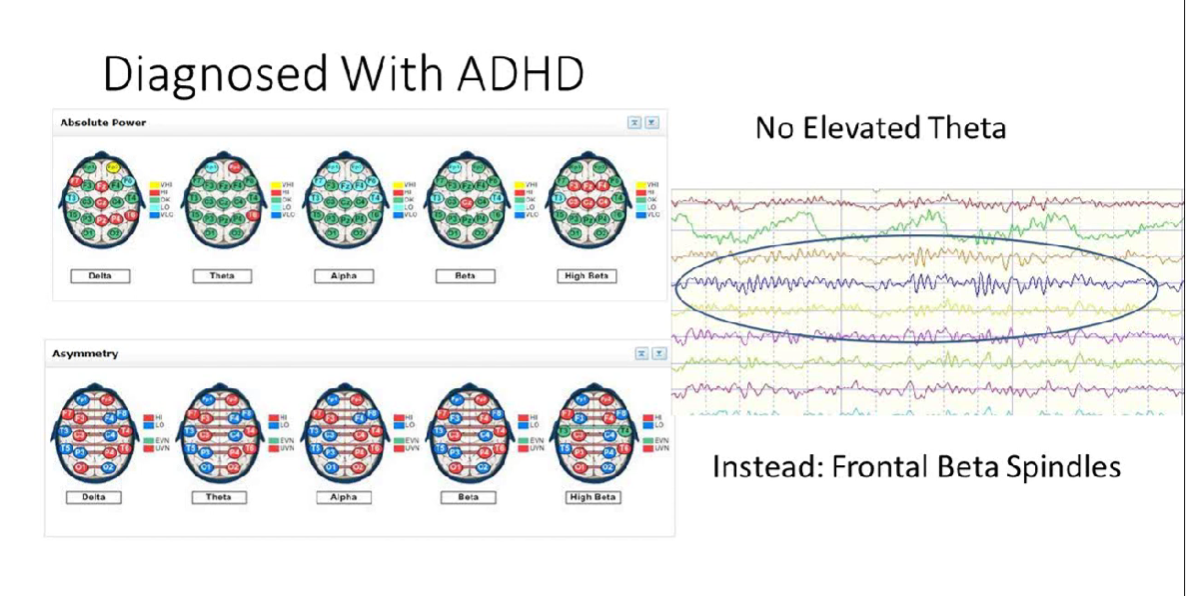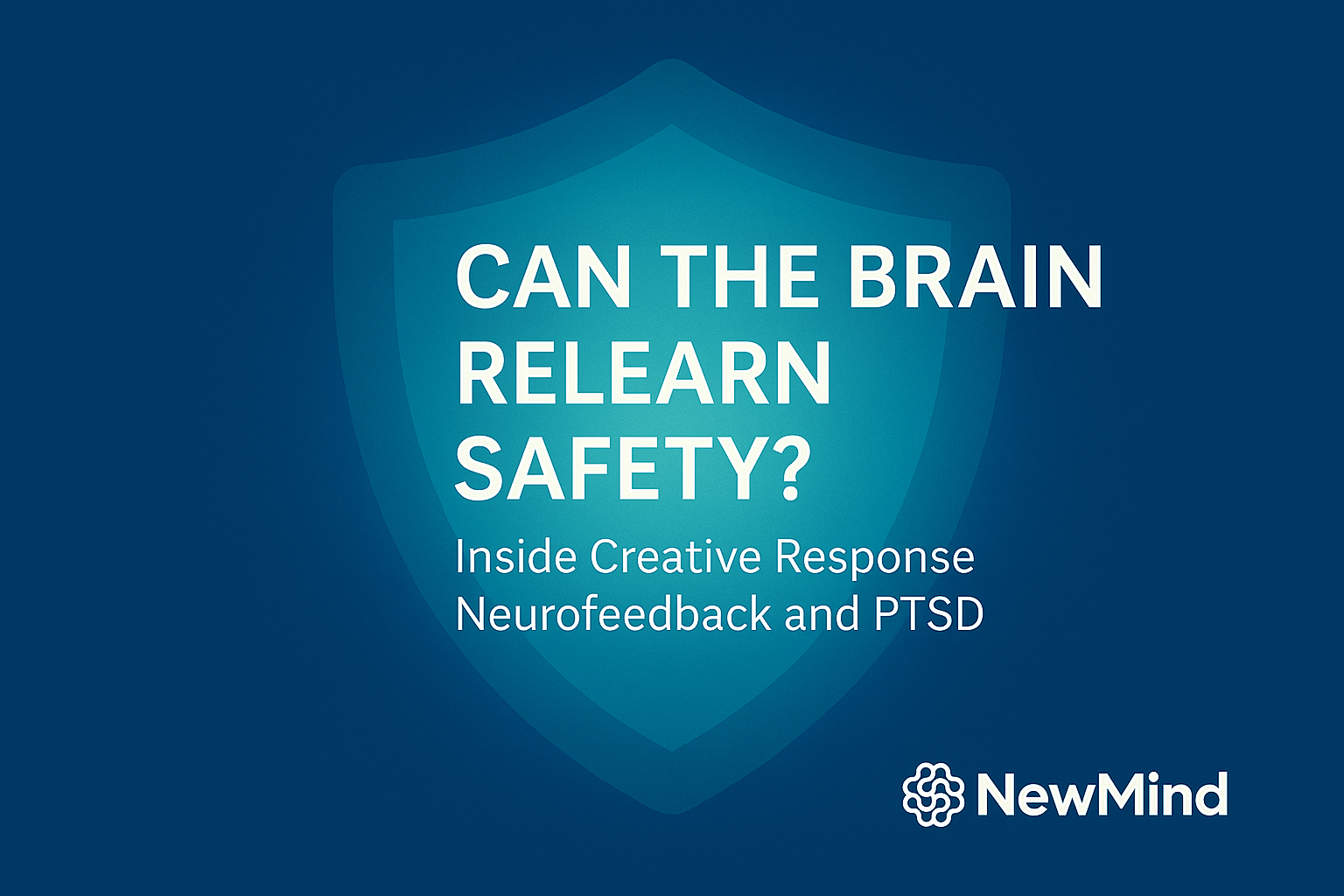The Truth About Theta: How Theta Brainwaves Shape Memory, Focus, and Relaxation

Different Brain Waves and Theta’s Role in Memory and Relaxation
Brainwaves play a crucial role in cognitive function, emotional regulation, and overall mental well-being. Among these, theta waves have long been associated with states of deep relaxation, creativity, and memory processing. However, misconceptions about theta waves persist. One common myth is that too much theta activity directly causes attention deficits, when in reality, it is more of a correlation rather than a direct cause. Another widely held belief is that all theta activity is beneficial, yet excessive recurrent theta can contribute to persistent rumination and emotional distress. Finally, many assume that neurofeedback should always aim to reduce theta waves, but research shows that increasing certain types of theta can enhance memory and emotional integration.

These misconceptions highlight the need for a more accurate understanding of different brainwaves—especially the two types of theta waves—and their role in cognitive function. Rather than oversimplifying their effects, it’s critical to recognize that theta waves serve multiple functions depending on their frequency and location in the brain. In fact, contrary to popular misconceptions, theta waves are neither inherently good nor bad—what matters is how they’re regulated and integrated into overall brain function. Adopting a more accurate and nuanced approach shifts the focus away from outdated assumptions, enabling those exploring neurofeedback to better understand how NewMind integrates these insights into modern training protocols.
This post will explore the two distinct types of theta waves, debunk common myths, and examine their specific roles in memory, emotional processing, relaxation, and cognitive well-being.
The Two Types of Theta Brain Waves for Relaxation and Memory
Indeed, adopting a nuanced approach allows neurofeedback practitioners to integrate these insights into modern training protocols. A clear example of this integration is the recognition of two distinct theta wave pathways, a discovery that has significantly reshaped neurofeedback and cognitive training methods. The recurrent theta system (3-4 Hz) is closely tied to emotional processing and the default mode network (DMN)—the brain’s resting-state network responsible for self-reflection and rumination. Excessive activity in this range is often linked to heightened emotional sensitivity, anxiety, and persistent negative thought patterns.
On the other hand, the ascending theta system (5-7 Hz) is more involved in working memory and attention regulation. It interacts with the central executive network (CEN), which governs higher-order cognitive functions such as problem-solving and decision-making. This type of theta wave plays a critical role in directing attention and integrating new information into memory, making it one of the most important brain waves for relaxation and cognitive balance.
Debunking Common Myths About Theta and Different Brain Waves
While the complexities of theta wave functions have been outlined above, it’s worth revisiting and directly addressing some persistent myths. One widespread belief in neurofeedback is that excessive theta activity directly causes attention problems, particularly in individuals with ADHD. However, research indicates that high theta levels correlate with attentional deficits rather than causing them. The brain is a highly interconnected system, and elevated theta may instead reflect deeper physiological or emotional imbalances.

Another misconception is that the theta-to-beta ratio is the best indicator of cognitive function. While this measure has been used to assess attentional states, it does not account for the full complexity of brain activity. A more nuanced approach considers the broader interplay between different brain waves, including delta and alpha waves, as well as the individual’s unique neurological patterns. For a deeper exploration of alpha waves and their critical role in cognitive balance, see Understanding Alpha Waves: Unlocking the Multifaceted Power of Alpha Brainwaves. What’s more, advanced brain mapping and targeted training approaches can offer deeper insight into how neurofeedback helps regulate these frequencies within personalized protocols.
Theta Brainwaves for Relaxation and Stress Reduction
Theta waves are commonly associated with meditative states and deep relaxation; consequently, practices such as mindfulness meditation, hypnosis, and alpha-theta neurofeedback training frequently aim to increase theta activity to promote stress reduction and emotional integration. In particular, alpha-theta training helps individuals transition between wakefulness and a meditative, twilight-like state, fostering deep relaxation as well as improved emotional processing. Moreover, while increasing theta waves can be beneficial, it’s essential to understand their nuanced role to avoid unintended emotional effects.
While theta waves can facilitate relaxation and meditative states, excessive recurrent theta activity may contribute to persistent rumination and emotional distress, especially in individuals with unresolved trauma. Consequently, effective neurofeedback protocols emphasize balancing theta waves rather than indiscriminately increasing or decreasing their presence. A recent meta-analysis published in Neuroscience & Biobehavioral Reviews supports this approach, highlighting how properly regulated frontal midline theta training can enhance relaxation and prevent overactivation of stress-related pathways.
The Role of Theta Brain Waves in Memory and Learning
Memory consolidation is a key function of theta waves, as they facilitate communication between the—the brain’s memory center—and the neocortex, which is responsible for higher cognitive functions. This interaction strengthens synaptic connections, playing a fundamental role in encoding and retrieving memories.
Within the theta frequency range, different frequencies contribute to distinct memory processes: the 3-4 Hz recurrent theta is primarily linked to emotional memory, whereas the 5-7 Hz ascending theta is closely associated with working memory and executive function. Recognizing this distinction helps neurofeedback practitioners develop targeted interventions to enhance specific cognitive abilities. Further evidence for targeted interventions comes from research demonstrating that integrating neural measures like EEG with behavioral training can effectively boost cognitive performance, including memory.
How Theta Waves Affect the Endocrine System and the Body
Beyond cognition, theta waves influence the body’s endocrine and autonomic nervous systems. The supramammillary nucleus, a region of the brainstem, plays a crucial role in regulating theta rhythms and linking them to hormonal balance and physiological functions such as heart rate and digestion. This connection suggests that neurofeedback training targeting theta activity may have broader implications for stress management and overall well-being.
Additionally, theta waves interact with the vagus nerve, which is integral to the body’s relaxation response. Enhancing theta activity through neurofeedback or meditation may support parasympathetic nervous system activation, reducing stress and promoting a state of calm.
The Future of Research on Different Brain Waves and Theta Regulation
Despite significant advancements, many aspects of theta wave function remain under investigation. Scientists are particularly interested in the role of theta-gamma coupling, a process in which theta waves synchronize with faster gamma oscillations (30-80 Hz) to facilitate complex information processing. Understanding these interactions may lead to new breakthroughs in optimizing brain function and treating neurological disorders.
Moreover, the relationship between theta activity and sleep quality continues to be a focal point in research. Poor sleep is known to disrupt theta rhythms, leading to cognitive impairments and emotional dysregulation. Neurofeedback interventions that restore healthy theta activity may provide an effective, non-pharmacological approach to improving sleep and overall mental health. Research suggests that individuals who struggle with maintaining theta waves for relaxation may also experience more disrupted sleep cycles.
The Importance of Balancing Theta Brain Waves for Relaxation and Cognitive Function
Given the complexities of theta waves discussed throughout this post, it becomes clear why understanding the nuances of recurrent and ascending theta activity matters for practical neurofeedback applications. The discovery of two distinct theta wave systems has profound implications for neurofeedback, cognitive training, and mental health interventions. By differentiating between recurrent and ascending theta, practitioners can develop more targeted and effective strategies to enhance memory, attention, and emotional regulation.
Rather than treating theta waves as inherently beneficial or harmful, it is crucial to recognize their dual nature and the necessity of balanced regulation. The real question is not whether theta waves are good or bad, but how they can best be managed to optimize cognitive function and emotional well-being. Emerging research, such as the integration of psychedelic therapies with neurofeedback, illustrates innovative strategies for balancing theta activity within a broader mental health context. Similarly, exploring personalized brain mapping and targeted neurofeedback protocols can provide deeper insight into effectively managing individual brainwave dynamics.
For more in-depth insights into neurofeedback and brainwave optimization, explore how different brain waves affect cognition and relaxation with the latest research in neuroscience.
Dive into the Details of Brainwave Optimization!
Works Cited
Micoulaud-Franchi, Jean-Arthur, Quentin Wittevrongel, Christian Marendaz, and Régis Lopez. “Modulation of human frontal midline theta by neurofeedback: A systematic review and meta-analysis.” Neuroscience & Biobehavioral Reviews 158 (2024). https://doi.org/10.1016/j.neubiorev.2024.105389.
Shen, Gang, Junnan Li, Xiyuan Dong, and Jiacheng Yang. “Combining Neural and Behavioral Measures Enhances Adaptive Training.” Frontiers in Human Neuroscience 16 (2022). https://doi.org/10.3389/fnhum.2022.787576.
Soutar, Richard. “Lunch and Learn with Dr. Richard Soutar.” YouTube video, 1:01:43. Posted by NewMind Technologies, May 10, 2019. https://youtu.be/7dUi3x8AgNU.
Dr. Lynn Langmade
Lynn is an award-winning marketer with over 20 years of experience in technology and healthcare industry, specializing in high-growth startups and Fortune 500 companies like Johnson & Johnson and Kaiser Permanente. With a doctorate in English, she combines deep writing and research expertise to tell compelling stories.



